Self-transcendence toolkit
The Transformative Interface Framework (TIF) is a tool for designing self-transcendent experiences (STEs) (fig. 1). It aims to support designers in creating interventions that invite STEs during everyday activities using (tangible) interactive technologies. The framework includes questions to guide thinking and decision making. To make the framework more accessible for students without a design background the idea for a toolkit emerged. It should help framework users to explore and design its three main components: the STE, the activity and the technological system (fig. 1). Because the main audience at this moment are students a course was considered a logical and accessible format for a toolkit. To reach students from different departments and years a blended learning paradigm is the starting point for the course.
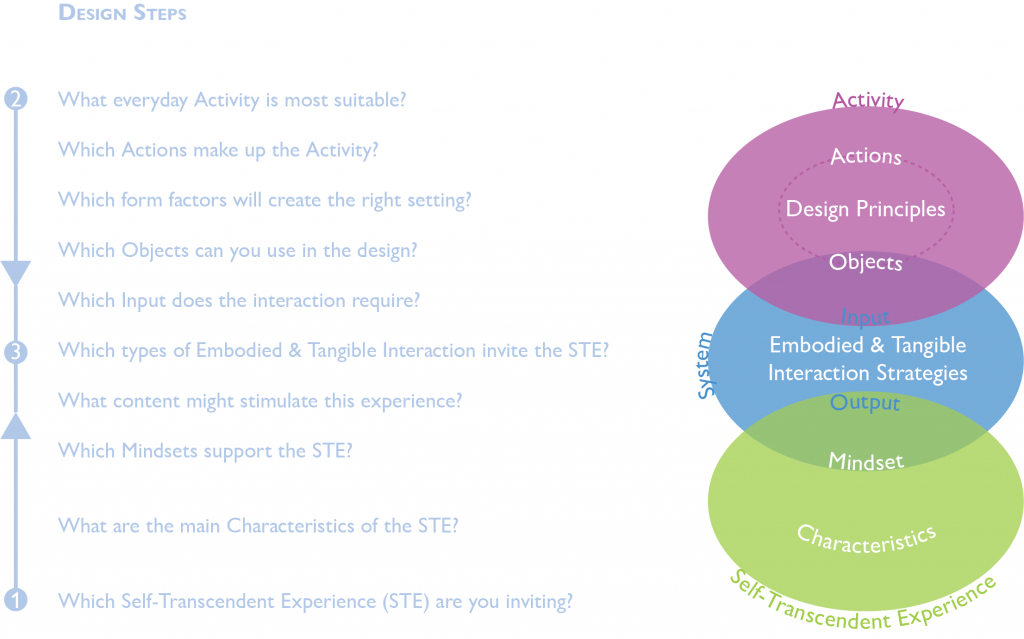
The final toolkit will consist of eight workshops covering the three main Transformative Interfaces components. This blog describes the outcomes of a pilot workshop that introduces STEs and the possible role of technology to the students.
Development
The design and development of the course is an iterative process. For over a year various lectures, workshops and course materials have been developed and tested with third-year bachelor students from the Communication and Multimedia Design department at Avans University of Applied Science. For the first workshop the theoretical background on STEs was recorded in four short knowledge clips with embedded questions (fig. 2). A custom worksheet helps them to translate this knowledge into a concrete, personal experience. For the pilot, a visual interactive template was developed to aid participants to create a scenario for inviting an STE using existing e-Health applications.
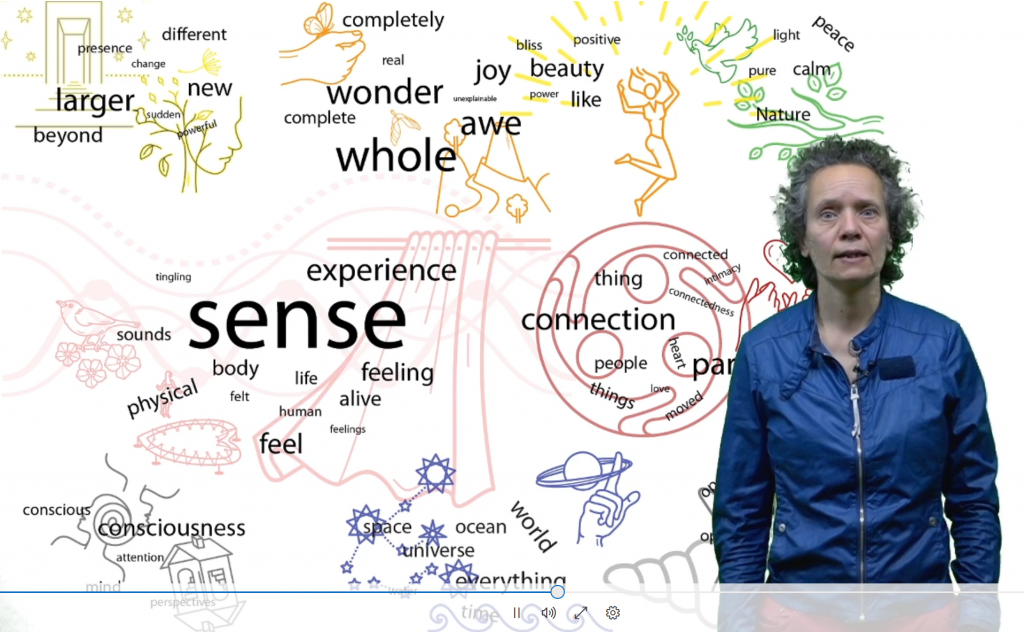
Pilot with GET-lab
GET-lab is a workshop (Wmo-werkplaats) at Avans University of Applied Science that enables healthcare professionals and students to practice and experiment with e-Health applications to further professionalise the field and stimulate critical thinking about the use of technology in this domain.
GET-lab was approached to try out a part of the toolkit. The pilot had two main aims. 1. Test the blended approach and learning materials with a multi-disciplinary group (design and health domain). 2. Let students explore the possibilities for using existing e-Health applications as part of an STE intervention.
Pilot design
The pilot consisted of four parts:
- Individual preparation: watch the knowledge clips
- Online group meeting: introductory presentation to GET-lab and office hour
- Online group meeting: completing and discussing the worksheet for describing an STE
- Online group meeting: translating one STE into a technological scenario using the visual collaboration tool Mural
During the meetings a GET-lab employee and the author we present for moderation and support. The main aim of part three is to make the abstract concept of STEs concrete and personal. This personal experience was the starting point of part four. Here the group chose one experience and explored ways to re-create or enhance this experience. The collaborative template provided means to think about the scenario and the use of technology.
Participants
Participants were recruited from the authors’ network through an email invitation. Five students from three different art and design departments responded. One teacher also participated in part one and two. Due to Covid-19 restrictions, GET-lab didn’t have access to students from the healthcare domain so none were invited.

Table 1 shows the background and attendance of the six participants. All of them watched the video’s and were present at the online presentation and office hour. Participants outside of Avans didn’t have access to the interactive video’s (i) due to technical restrictions. They watched the video’s but without the questions (s). During part three and four, five and four participants were present respectively.
Results worksheet
The STE worksheet invites users to recall a recent, positive STE. It can be an experience during any kind of activity and of any intensity as outlined in figure 3. The experience should be recent enough to recall rich detail. The document consists of a template with six questions about the STE:
- When (did the STE take place?)
- Description (what happened?)
- Name/title (how would you frame the experience?)
- What instigated the experience? (Suggestions: vastness, unity, feelings of wholeness, etc.)
- What (possibly) hindered the experience?
- How could this be helped?
Four out of five participants handed in a completed worksheet. The occasions described were very different ranging from contact with a deceased parent to a daily commute on a pedelec bike. Looking at the spectrum of STEs as defined by Yaden et al. (2017) the experiences are spread out over the spectrum (fig. 3).

STEs may have a transformative effect in the sense that they can permanently change ones’ worldview (Gaggioli, 2016). This is said to depend on the intensity of the experience (Ibid.). During the discussion, it became clear that for participant E the mindful experience was transforming and lead to some radical new life choices. So intensity as a factor for transformation as mentioned by Gaggioli may be pointing to the lived experience instead of its position on the spectrum. Participants were very open in discussing their experience. This made it possible to map the experiences in retrospect and gain more insight into their nature and effects.
Results Mural
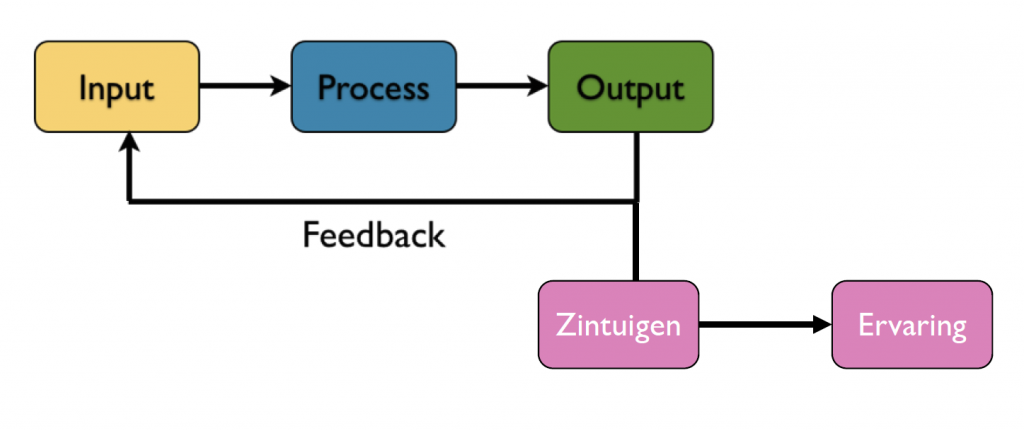
The final session started with a presentation that introduced the components of an interactive system (fig. 4). Participants then decided on one of the experiences and started creating a scenario in which technology. The four participants worked as a group. The goal was to envision a scenario that would enable or enhance a similar experience. They used a custom template build with the visual collaboration tool Mural. The template outlined a high-level interactive system with input that is manipulated in some way and leads to output that can be experienced. The author made a selection of 19 e-Health applications available at GET-lab. They were presented as draggable images with a short description. Participants had been encouraged to take a look at the available technologies before the start of the workshop.
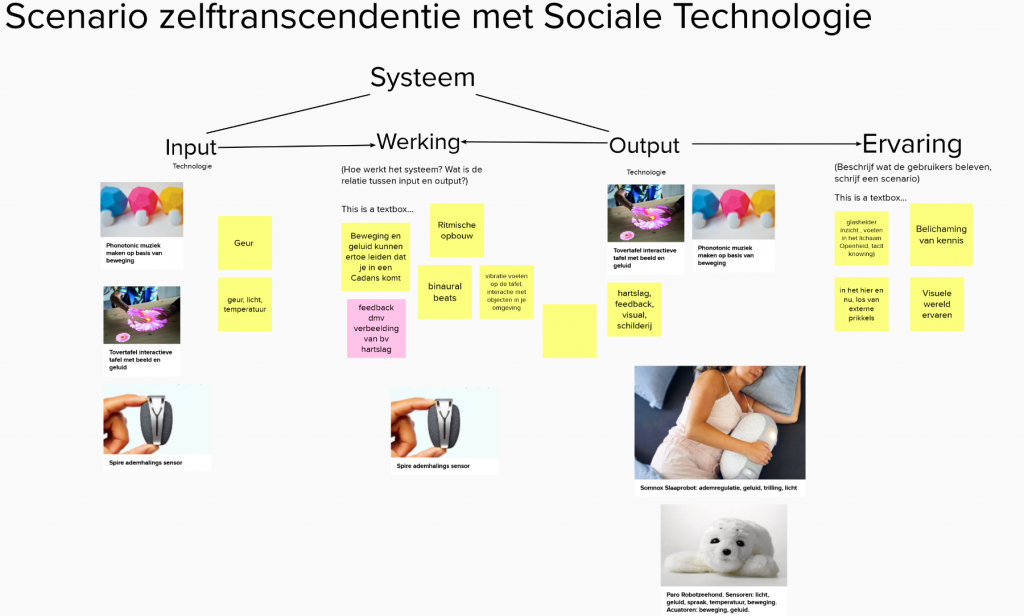
The group decided to work on the experience from participant G. This is the most complex (fig. 3) because it included three types of STE. Considerable time was spend discussing the workings of the various technologies on the list. Less time was spent on actually building the system and reflecting on the scenario of the STE. It resulted in three scenarios (fig. 5). In two of the three scenarios, the input device was also the output device. The third focussed on devices that captured and emulated breathing. The scenario’s focussed mostly on what happened with the body and less on the mental or emotional effects. The context of the system wasn’t discussed. Instead of a lengthy description, the group captured the experience in one sentence which made it very abstract. The actual workings of the hypothetical system, therefore, remained vague.
Survey
After the workshop, all participants anonymously filled in a short survey about the workshop experience. The following lists the questions and a summary of the answers.
Which part of the workshop did you enjoy most and why? 3 out of 5 participants chose the introductory presentation to GET-lab and office hour. However, the explanation for this choice by one of the participants made clear that the reason was “sharing the STEs”. So presumably they meant part three: completing and discussing the worksheet for describing an STE. One participant chose the video’s and also recommended explaining the technologies this way. One person chose “working with the Mural” because it gave insights into using these technologies.
What did you learn from the workshop? The main take away was learning about the technologies and connecting them to experiences (three mentions). Exchanging and being open-minded (two mentions). Learning about STEs and how to invite them (one mention).
How did you experience using the worksheet and Mural? Not all participants took part in the sessions in which we used these tools. Those who did were satisfied working with them and one participant mentioned enjoying working on the Mural together.
What was hard for you? Two participants mentioned the group experience: opening up and staying patient. One person found it hard to create the actual link between the technology and the experience. One person wondered about the applicability and next steps. One person didn’t find anything hard.
Tips and remarks. Two participants mentioned the speed of the meetings. Especially the introductory round in part three: completing and discussing the worksheet for describing an STE. (It took so much time that we had to schedule an unplanned meeting for working with the Mural.) The others were satisfied with the workshop or didn’t comment.
Conclusions
The workshop aimed to test the blended approach and course materials with a multi-disciplinary group and to let students explore the possibility to use e-Health applications as part of an STE intervention. This aim can be translated into the following questions and conclusions:
Can the blended approach and the course materials be applied to and used by a multidisciplinary group of students?
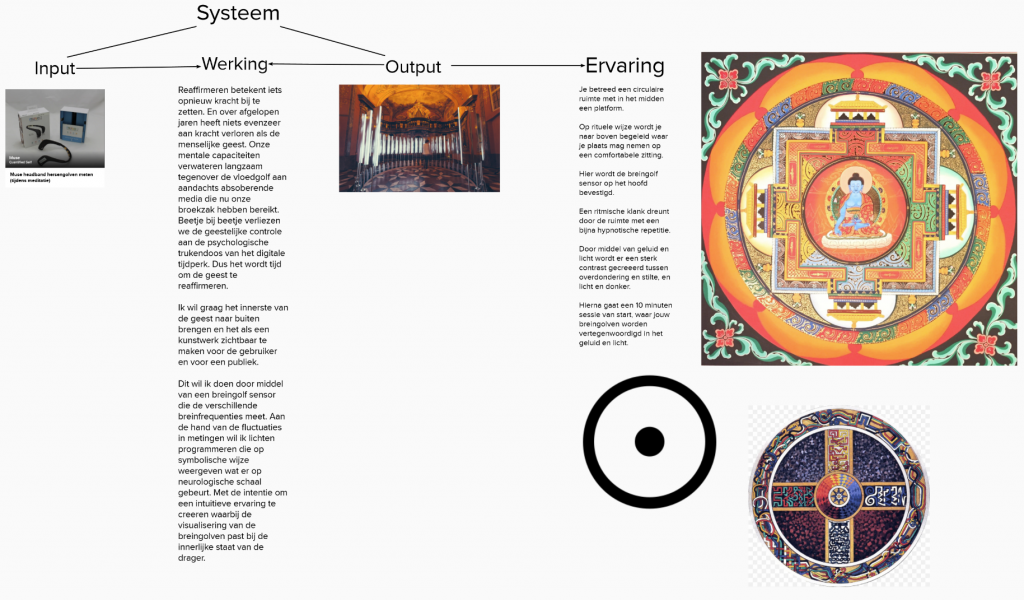
This appears to be possible. The videos were well received. Participants found the content clear (none of the participants had any questions about the main concepts introduced in the video’s) and pleasant to watch. The questions included in the video’s helped participants to think deeper about the content.
Participants were able to fill in the worksheet and use it as a basis for sharing their experience. Two participants completed a personal case study to practice with the Mural template (fig. 6). During the session, most participants actively contributed to the scenario building process.
Is it possible to develop scenarios for repurposing existing e-Health applications to invite STEs?
Yes, three scenario’s were build. However, the elaboration remained rather superficial. It appeared hard for the participants to judge what input and output would match the desired experience. The latter wasn’t described in much detail. From the short descriptions, it remains unclear how effective the use of the technologies was deemed to be.
Discussion and future work
Creating and experiencing impactful STEs is the overarching goal for developing the toolkit. Mapping the STEs after the workshop has made it clear that students from different backgrounds can describe meaningful and rich STEs. Judging from how they were used in the Mural session their value may be underestimated by the students. By immediately moving on to a technological adaptation the quality and richness of the experience are lost. To explore their full potential more time should be spent on reflection and interpretation. Two possibilities emerge for resolving this issue:
Repurposing the workshop. The evaluations made clear that among some students the aim was to swiftly work towards and through the technological scenario’s. Working with the students has shown that their experiences have much more potential. In a short workshop like the one described here, more focus should be on the STE. This can be achieved by allotting more time to this part and help students interpret their STE.
Make the STE worksheet more actionable. The gap between the experience and the technology is big. Introducing additional questions may help students to reflect more deeply about their experience. These questions could be about sensory experiences, the transformative potential of the experience and the sense of well-being experienced. These questions also make the experience more concrete in terms of input and output. This will allow for easier mapping to an interactive system.
Having participants introduce themselves takes time but is a necessary step. It creates the trust needed to share (sometimes very personal) STEs. A solution could be to let participants record and share an introduction before the start of part three using an online tool like Flipgrid.
As one participant suggested it would be helpful if the technologies were also introduced by video clips. This however would be very time-consuming. Participants were invited to use the GET-lab app and their virtual tour to explore the technologies. An overview of the suggested technologies was also shared. It seems that non of the participants made use of this opportunity. This might be because it was a voluntary assignment. Stating a clear homework assignment such as: Choose three favourite technologies from the list might have been more motivating.
Covid-19 restrictions prevented a hands-on workshop with the actual technologies and also the ability to reach out to healthcare students. Both may have impacted the choices for the technologies and the scenario outcomes.
References
Gaggioli, A. (2016). Transformative Experience Design. In Human Computer Confluence. Transforming Human Experience Through Symbiotic Technologies, eds A. Gaggioli, A. Ferscha, G. Riva, S. Dunne, and I. Viaud-Delmon (Berlin: De Gruyter Open), 96–121.
Yaden, D. B., Haidt, J., Hood, R. W., Jr., Vago, D. R., & Newberg, A. B. (2017, May 1). The Varieties of Self-Transcendent Experience. Review of General Psychology. Advance online publication. http://dx.doi.org/10.1037/gpr0000102
Supported by: Avans University of Applied Sciences, Centre of Applied Research for Art, Design and Technology (CARADT), VONK onderwijsinnovatie.